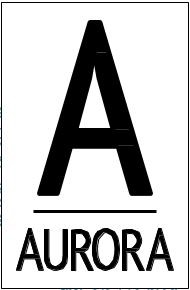


Surface currents excited by an integrated L-band antenna computed with CREATE-RF SENTRi on a V-22 Osprey
CREATE-RF (Radio Frequency)
As integral components of almost all DoD weapon systems, antennas and radars perform critical communication, identification, and navigation functions necessary for warfighter effectiveness and survivability. Computational Electromagnetics (CEM) tools have matured in recent years and are widely used for antenna concept exploration and design by the DoD and its contractors. Our software suite includes: SENTRi Generation 1 (G1), SENTRi Generation 2 (G2), FLO-K, and Aurora.
 SENTRi is CREATE-RF's flagship product. It is a full wave computational
electromagnetic (CEM) code utilizing the hybrid finite element boundary integral
method (FEBI), making it suitable for solving a wide variety of electromagnetic
problems including antennas, antennas on platforms, passive microwave circuits, and
EMI/EMC. SENTRi is available for both MS Windows and Linux operating systems. It can
be run on engineering workstations and utilizes MPI technology allowing it to take
full advantage of the HPCMP DSRC supercomputing systems. SENTRi comes in two
versions. SENTRi Generation 1 (G1) is a highly optimized solver for monolithic meshes
with several advanced capabilities. SENTRi Generation 2 (G2) was developed due to
technical limitations inherent in the Generation 1 code. Additional features in
SENTRi G2 include a richer BI solver, the domain decomposition method (DDM),
hierarchical basis functions, symmetry, and a powerful Python scripting interface.
SENTRi is CREATE-RF's flagship product. It is a full wave computational
electromagnetic (CEM) code utilizing the hybrid finite element boundary integral
method (FEBI), making it suitable for solving a wide variety of electromagnetic
problems including antennas, antennas on platforms, passive microwave circuits, and
EMI/EMC. SENTRi is available for both MS Windows and Linux operating systems. It can
be run on engineering workstations and utilizes MPI technology allowing it to take
full advantage of the HPCMP DSRC supercomputing systems. SENTRi comes in two
versions. SENTRi Generation 1 (G1) is a highly optimized solver for monolithic meshes
with several advanced capabilities. SENTRi Generation 2 (G2) was developed due to
technical limitations inherent in the Generation 1 code. Additional features in
SENTRi G2 include a richer BI solver, the domain decomposition method (DDM),
hierarchical basis functions, symmetry, and a powerful Python scripting interface.
Frequency Domain
SENTRi is a frequency domain code — which means one frequency at a time is solved; frequency sweeps are handled by running a series of solutions as defined by the user. SENTRi was designed as a frequency domain code to provide a higher degree of accuracy. In addition, frequency domain methods provide faster solutions for far field sweeps, calculation of S-parameter matrices for multi-port microwave circuits, and scanning of phased array antennas.
Material Modeling
SENTRi is designed for the modeling of complex structures including highly, heterogeneous material structures with multi-scaled features. SENTRi's material modeling includes dielectric, magnetic, impedance boundary conditions, and complex valued resistive sheets. Volume materials can have combined dielectric and magnetic properties, and can be isotropic or anisotropic. Volume materials can also have continuously varying properties with definitions provided by user-authored Python scripts. Similarly, Python scripts are used for defining the frequency varying properties of dispersive materials and for position varying resistive sheets.

Surface currents on notional fighter aircraft at UHF frequencies
 Hybridized with SENTRi G1 and available from the CREATE-RF program, Aurora
is an asymptotic approximate EM solver, employing the physical-optics
shooting-and-bouncing-rays (PO-SBR) technique for computing installed antenna
patterns and plane wave scattering from electrically large platforms. Helping
fulfill CREATE-RF's antenna-on-platform integration analysis objective, Aurora
has modeled antenna patterns from parabolic reflectors up to aircraft carriers.
It supports Windows and Linux and executes efficiently on HPC systems.
Hybridized with SENTRi G1 and available from the CREATE-RF program, Aurora
is an asymptotic approximate EM solver, employing the physical-optics
shooting-and-bouncing-rays (PO-SBR) technique for computing installed antenna
patterns and plane wave scattering from electrically large platforms. Helping
fulfill CREATE-RF's antenna-on-platform integration analysis objective, Aurora
has modeled antenna patterns from parabolic reflectors up to aircraft carriers.
It supports Windows and Linux and executes efficiently on HPC systems.
Hybrid SENTRi/Aurora In-Situ Antenna Analysis
SENTRi accurately predicts antenna patterns. As frequency rises, modeling platform interaction grows to be intractable. The SENTRi/Aurora hybrid accelerates and makes tractable platform integration analysis on otherwise unreachable problems. Reduced solve times also aid engineers in quickly understanding the impact of features such as propellers on the CV-22 Osprey at 2.4 GHz in less than an hour on a laptop.
Large Scale Problem Capable
Using 8,192 cores on the Excalibur system at the ARL DSRC, Aurora simulated a 2.4-GHz horizontal dipole antenna on a Nimitz class carrier with 13 FA-18 Hornets in 7 minutes.

Surface currents on C-130 Hercules Aircraft
 FLO-K is CREATE-RF's rapid design code for periodic structures such
as frequency selective surfaces, phased-array antennas, band-gap structures,
etc. FLO-K utilizes a finite element method coupled to a floquet modal expansion.
Full three-dimensional structures with dielectric, magnetic, and impedance sheets
can be modeled with FLO-K. Both rectangular and triangle lattices can be
constructed, Structures can be modeled as screens (transmitted/reflected) or
backed by impenetrable surface (reflected only).
FLO-K is CREATE-RF's rapid design code for periodic structures such
as frequency selective surfaces, phased-array antennas, band-gap structures,
etc. FLO-K utilizes a finite element method coupled to a floquet modal expansion.
Full three-dimensional structures with dielectric, magnetic, and impedance sheets
can be modeled with FLO-K. Both rectangular and triangle lattices can be
constructed, Structures can be modeled as screens (transmitted/reflected) or
backed by impenetrable surface (reflected only).

Surface currents on AH-64 Apache helicopter
Requesting Access
To request access to any of the above software, please visit our Contact page.
